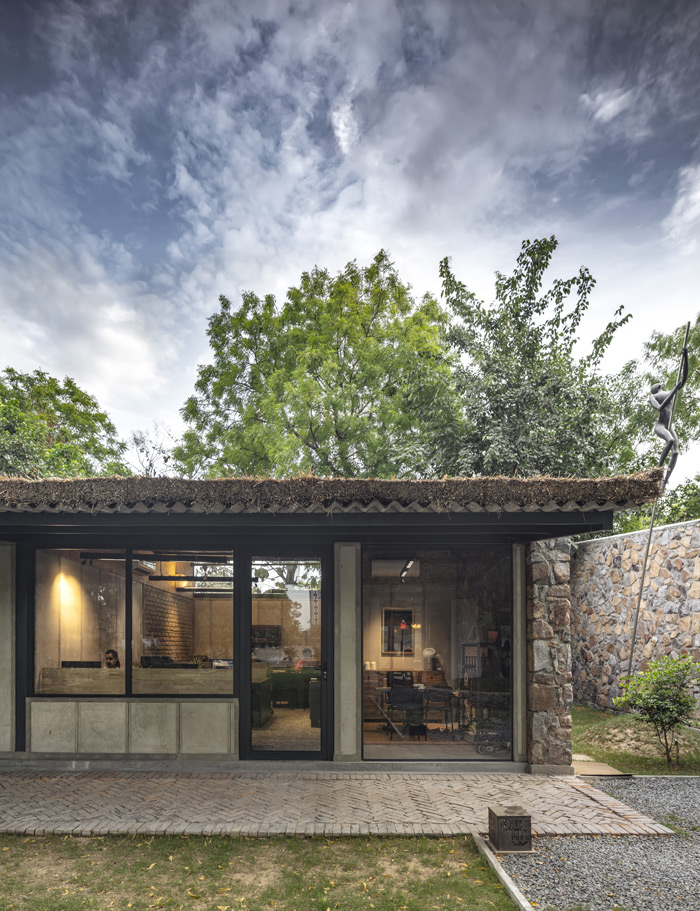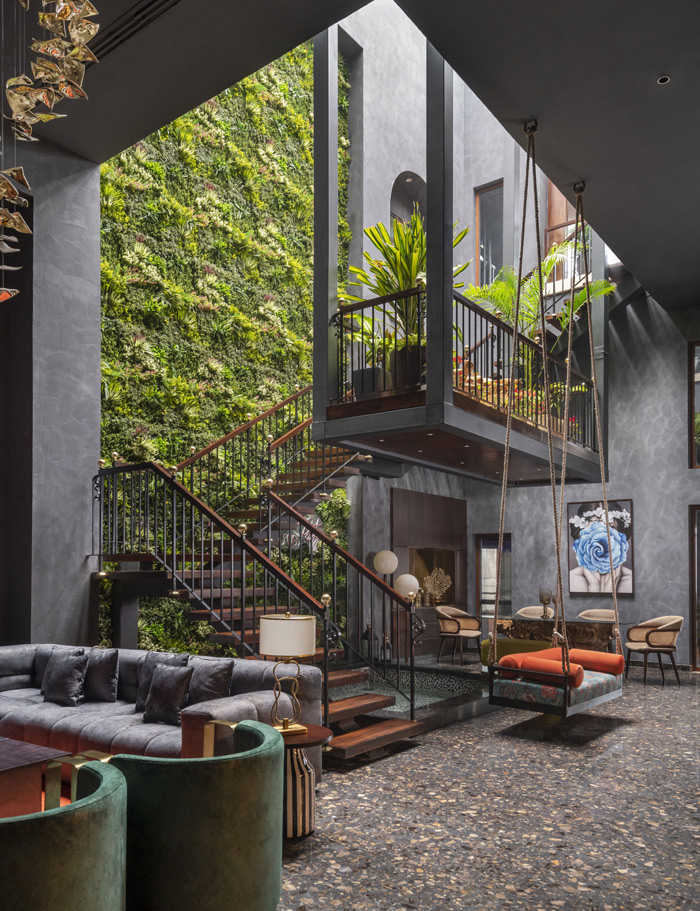Biophilic design plays a significant role in redefining corporate culture, one space at a time. In the bustling landscape of modern corporate environments, where the boundary between work and life can often blur, groupDCA works towards a holistic design philosophy that enhances the human-nature connection and makes the built environment more palatable.
We firmly believe in the transformative power of biophilic design for corporate spaces, recognising its profound impact on physical and mental well-being, creativity, and productivity. The biophilic designs integrate natural elements into the built environment, accentuating the connection with nature using natural light, plantations, earthy materials, textures, etc. It enables seamless functioning and also improves the quality of space. Many studies have shown that it reduces stress, enhances cognitive function, and inspires innovation. However, there is more to it that transcends the mere aesthetic—something more experiential and sensory.
Our project, Visage, a corporate office in Noida, successfully implements this concept. Here, we have seamlessly integrated natural elements to enhance functionality, quality of space, and aesthetics. The innovative use of adjustable fins on the building facade optimises natural light and controls interior temperatures, creating a dynamic and inviting workspace that adapts to varying weather conditions and makes for comfortable interiors. This design enhances productivity and promotes a sense of well-being for occupants.


Moreover, natural materials such as wood and stone used in their raw forms, contours, and textures add visual appeal and establish a tactile connection with nature, enriching the sensory experience for the user. The organic flow of the layout and expansive vistas further contribute to a sense of openness and offer connectivity within the office. The circulation spaces, like corridors and stairs, are crafted with organic shapes and forms, promoting a seamless flow. Various plants are used in the space to improve the aesthetic appeal and the air quality throughout the workplace. Furthermore, details like furniture accents made from natural materials like cane weaves and fabrics with earthy hues and textures subtly reinforce our approach, infusing the workplace with the warmth and tranquillity of nature.
Additionally, there are nuanced design elements that go beyond surface aesthetics, like the ones we have used in the Primarc office in Kolkata. Polished concrete and textured wood flooring establish an earthy palette that resonates with the textures of nature. Strategic planters create breathing partitions that infuse life and greenery within, while carefully curated pause points offer spaces for reflection and rejuvenation amidst daily activities. Artworks and finishes selected for their organic textures and nature-based themes deepen the connection between occupants and their surroundings, offering overall well-being.
At groupDCA, biophilic design is more than a design trend; it’s an approach that integrates human needs with the natural environment, creating workplaces that inspire creativity, collaboration, and a deeper connection with nature. As architects and designers, we must devise innovative and creative solutions to integrate nature into buildings. It will help users to boost vibrancy, innovation, creativity, and productivity. Biophilia thus benefits both buildings and their inhabitants, fostering a symbiotic relationship between nature and architecture.



